Swimming consequences of making mistakes in maintenance for your Swimming pool area on an individual scale of pleasure are somewhere between tripping over a rake and being knocked around in the tender parts. Swimming pools are a great place to be, and there are numerous opportunities to make mistakes with your pool, whether they are big or small.
[powerkit_toc title=”Table of Contents” depth=”2″ min_count=”4″ min_characters=”1000″ btn_hide=”true” default_state=”expanded”]
However, mistakes are actually an opportunity to learn. Learning about the most frequently made mistakes made by Swimming pool owners can help to keep your pool safe and cleaner and running efficiently, with less hassle and mess.
Adding Shock Directly Into The Swimming Pool Water
The chemical that is known as pool shock is actually concentrated chlorine. When it is at its highest strength, chlorine bleaches anything in your Swimming pool. For instance, it may change the colour of black clothes to pink, and white clothing yellow in the event that it is too high.
You shouldn’t be worried about over shocking your Swimming pool. It’s a fashion mistake. Adding shock directly to the water of your pool travel ways when you have vinyl liner could be an absolute disaster. The shock granules sink into the bottom of the pool and will bleach the liner. The area that has been bleached becomes hard and fragile, leading to leak
The Solution
Dissolve the chemical prior to use in the water in a bucket prior to when the shock is applied to your pool. This allows the shock to disperse evenly throughout the water, thereby protecting your liner, the walls of the pool and the floor.
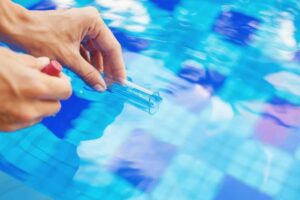
A key rule to keep in mind when trying to avoid errors in the maintenance of your pool can be “Always add chemicals to water, and never water to chemicals.” Fill the bucket first with water prior to adding shock in order to prevent splashbacks that could be dangerous.
Using warm water will dissolve the shock easily, and it will also create the awesome-sounding but not-so-awesome-feeling chlorine steam. Wear your safety glasses and a mask for chemical exposure and gloves that resist chemicals before you prepare your bucket of water for shock.
Not Brushing Your Swimming Pool
You know the importance of having important to remove the debris from your swimming water frequently to prevent gunk and scum from accumulating and ruining your swimming.
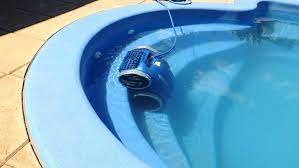
However, just as your teeth or a group of Angora rabbits, your swimming pool requires thorough cleaning to make it look as good as new if you clean it manually or by using an automated system and then follow it up with a thorough brushing.
The Solution
Take an apex brush and begin to tackle your Swimming pool’s difficult-to-reach areas, such as:
- Behind ladders
- Waterline
- Stairs and steps
- Crevices and corners

This scrubbing helps keep the algae as well as other invading creatures at bay. Clean once per week, or more frequently when it is needed for a clean, sparkling pool.
An Automatic Pool Cleaner Will Help When You Have An Algae Problem
The process of dealing with algae in your Swimming pool isn’t difficult enough. You can add vacuuming. You could be thinking that it’s time to change your pool with a less-maintenance option like an orchid farm or meerkat sanctuary.

It’s tempting, but do not open your robotic cleaner. Pressure-side pool cleaners pull dirt and algae through mesh bags. This allows algae to have an enjoyable tour around the pool but does not eliminate it.
The use of high-tech products isn’t going to help, and neither will it help. They’re awe-inspiring even when algae isn’t a problem; however, even the top robotic pool cleaners employ an extremely fine mesh bag that will block the pool with algae fast. The gunk that’s blocked is scattered around the pool, and then you’re back at the start.
The Solution
This frequent Swimming pool care error is not difficult, although the process is a bit laborious. It’s time to get open an automatic vacuum. Make sure you switch the filter on from “waste” or remove the drain plug.
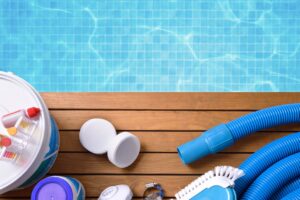
You’ll certainly lose some water. However, you’ll also get rid of the algae. They’ll be removed from the pool and out of your home. Here’s our tutorial on how to vacuum your pool manually.
Ignoring Your pH & Alkalinity Levels
Way back to your high school science classes, you must have learned about the importance of balanced pH to healthy, happy ecosystems–including your Swimming pool. A pH that is low indicates acidity, while a higher one is indicative of alkalinity. A high level of either is not good news.
If your water is at a lower pH level, then it’s extremely acidic. It may seem like something that’s good at first since it’s extremely difficult to allow algae or other intruders to survive in acidic water. Acidic water also shimmers and appears, at first look, to be clean and clean.

However, as we discovered after having eaten some seriously bad gasoline station sushi, appearances aren’t always accurate. A low pH could cause damage to the equipment in your Swimming pool, such as:
- Pump and filter for the pool
- Vinyl liner
- Heater
- Automatic pool cleaner
- Chemical feeder
- Maintenance equipment
- Solar blanket
The Solution
Our goal? Better living by the science of chemistry. The balance between alkalinity and acidity keeps your pH level stable. Since almost everything can alter the chemistry of your water within a matter of minutes, ensure that you examine your pool’s water frequently.

Adjust your levels using pH enhancers, alkalinity boosters as well as other vital chemicals till you’re back to normal.
Backwashing Your Pool Filter Too Often
Despite its name, it is not an undiscovered toddler method for creating floaties in your soda. Backwashing is a method of cleaning the media within your filter, regardless of whether it’s sand or diatomaceous soil (D.E.).

Pool water flushes gunk and funk out of the filter media. It then flows out through your filter’s the drain ports of your backwash valve. Backwashing is an essential element of the basic care for your pool But overdoing it is one of the most common mistakes made by pool owners.
The Solution
Pay attention to the gauge of pressure in your tank for your filter. After you have given the filter an extensive wash, be sure to note the gauge’s pressure. In the majority of cases, it should read between 10 to 15 pounds for each square inch (psi), which is the ideal level for the best performance of your filter.

This may seem strange, but the greater the amount of debris you can capture by your filter more effectively the filter’s performance will be up to a certain point. The extra debris can help trap smaller particles. However, the benefits diminish once the buildup increases the pressure reading to about ten psi above the base (i.e. 20 psi to 25 Psi ).
If the pressure in your filter exceeds 10 PSI above the normal pressure, it’s likely that you’ve received a healthy dose of goop, increasing the pressure. Clean it out and lower the pressure to keep your system running to its fullest.
Adding Pool Shock Through Your Skimmer
A few mistakes in the maintenance of your pool are minor. However, since making this mistake could cause complete disruption to the filtering system of your pool, we advise against this at all costs.
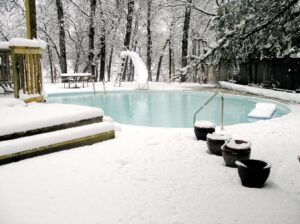
Combining calcium hypochlorite (also known as the shock of a pool with chlorine makes the deadly gas. If you are using an automatic chlorinator to your filter system, and you add the shock to the skimmer, both chemicals will be able to combine in a tiny space.
The outcome?
Tiny chamber + deadly gas expansion = BOOM.
The Solution
Make sure that your pool shock is kept and your skimmer apart from each other. Always put in your shock according to the directions of the manufacturer while wearing safety gear that is appropriate.
Shocking Your Swimming Pool During The Day
Chlorine in the water in your pool is a binder for particles that it is trying to kill, releasing chemicals known as chloramines. Because they cause irritation to the skin and eyes and generally cause discomfort, they shouldn’t be present in your swimming pool.
Shocking eliminates chloramines and can help bring your pool’s chlorine levels up to the level of three parts for every million (ppm).
While the day is great for spending time in the pool and also the right timing to shock, it’s because shock isn’t stabilized chlorine. It is also known as the sun. It isn’t friendly to the pool of shock will melt away one ppm per hour, which reduces the effectiveness of your chemicals and also wastes your money.
The Solution
At night, shock your pool in order to allow your pool enough time to complete its task. Also, make sure to shock your pool each week using approximately one lb. (.5 kilograms) of shock per 10000 gallons (37,854 L) of water. Then, check until you’re close to 3 ppm.
Not Leveraging the Calcium Hardness Of Your Pool Water
In the same way as pH, keeping the calcium hardness of your water is crucial to having an uncluttered, clean and safe swimming pool. Although you shouldn’t need too much since it could cause water to become cloudy, A little bit of hardness is actually a great thing.
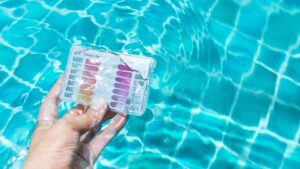
It can help extend the lifespan of objects such as concrete liners, vinyl and fibreglass, as well as plaster and even filters.
The Solution
You can also add calcium hardness enhancers to maintain you at the recommended levels of 175 ppm-225 per millimetre (200 120 ppm to 277 ppm in the pool made of concrete or plaster). You can add it after you open your pool to reach the right level for you. It is to be. Make sure you check it frequently during the season of swimming as evaporation and water splash-out can lower the levels too much.
And if you’re using calcium hypochlorite shock in your pool, you’re actually adding a tiny amount of calcium every time you make use of it. It’s a little bit of a bonus for the savvy pool owner as it can shock and extend the lifespan of the pool equipment. Nice.
Running Your Pool Filter System Less Than Eight Hours A Day
The pool’s filter won’t be able to work when it’s not in operation. The more often you use your filter, the fewer pollutants and creatures can cause problems.
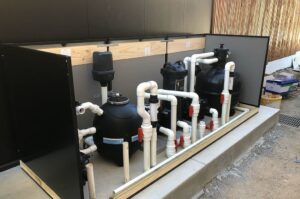
When it comes to mistakes in pool maintenance, the one above is pretty minor; however, it’s worthwhile to take the time to run the filter.
The Solution
Make sure that you run your pool’s filter and pump for at least 8 hours per day. Based on the dimensions of your swimming pool, this should give enough time for all water to flow through the filter and keep your water clean.
Neglecting To Test Your Pool Water Weekly
The ownership of a Swimming pool is accompanied by many tasks to take care of each day, week, month and year.
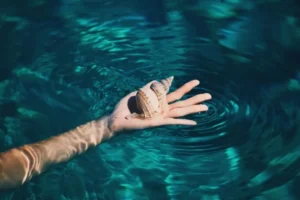
The weekly testing of your water is among the most crucial, as it could alert you to tiny issues in the water’s chemistry prior to them becoming major problems.
The Solution
Check your Swimming pool’s water at least every week, using testing strips or even a test kit for liquids. Take a sample of the water from your pool to your local store for pool supplies to have a comprehensive analysis at least once per month.
The main levels to test on are
- pH as well as alkalinity
- Calcium hardness
- Cyanuric acid (chlorine stabilizer)
- Salt levels and Total dissolved Solids (TDS) concentrations
- Iron and copper
Wearing Street Clothes in Your Pool
We’re no strangers to the latest fashions. We’re able to rock the stunning oddity of a romp him and the very best of them. We’ve even considered buying one of the Lady Gaga Swan clothes for casual Fridays a while ago. However, we don’t want to look at streetwear in pools.
Dressing in your normal clothes at the pool could expose chemicals, fibres, chemicals, and other contaminants to your water. Additionally, the chemicals in your water could harm your clothes. The water you drink will be contaminated, and everyone in the neighbourhood will be wondering why you’ve suddenly become so obsessed with the tie-dyed style.
The Solution
Wear streetwear and don’t wear swimsuits in the pool.
Every Mistake Gives a Lesson for Better Pool Care
Nobody’s perfect. From bad water chemistry to letting Uncle Hank try out his new ale-powered algae extractor, we all make mistakes in maintaining our pools.

Every mistake is an opportunity to improve your pool’s maintenance game. If you take the time to take lessons from the mistakes of others, you’ll be spending less time looking after your pool and spending more time relaxing in it.



